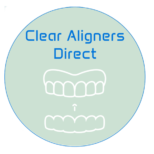Full Scientific based article here
The Airway–Posture–Autonomic Axis
A Clear Explanation of How Structure Impacts Symptoms
Many patients experience a confusing mix of symptoms: anxiety, heart palpitations, tight neck muscles, poor sleep, chronic fatigue, and headaches. They often bounce from doctor to doctor without clear answers, because their problems aren’t rooted in just one system — they’re structural.
This guide breaks down a new clinical model: the airway–posture–autonomic axis. It shows how the shape of the face, jaw, and airway directly affects posture, breathing, nervous system regulation, and long-term health. The goal is to help you understand how these systems interact — and what to do about it.
1. A Single Root: Not Enough Space for the Tongue
The airway-posture-autonomic axis begins with one simple issue: the tongue doesn’t have enough room.
- A narrow upper jaw (maxilla) or a recessed lower jaw (mandible) pushes the tongue backward.
- When the tongue drops back, it blocks the airway, especially when lying down or sleeping.
- To compensate, the body adapts by tilting the head forward (forward head posture) to open the airway — similar to a CPR head tilt.
- But that head tilt strains the neck, compresses the spine, and irritates the autonomic nervous system, especially the sympathetic branch — the “fight or flight” system.
Over time, this cycle leads to symptoms like:
- Anxiety, panic attacks
- High heart rate or blood pressure
- Neck and back pain
- Sleep problems
- Chronic fatigue or burnout
2. How Anatomy Creates Dysfunction
Let’s look at the physical issues behind the symptoms:
Maxilla Too Narrow
- A narrow upper jaw means less space for the tongue to sit forward and up.
- The tongue gets pushed back into the throat, shrinking the airway.
- This also increases nasal resistance and encourages mouth breathing, which worsens jaw growth over time.
Mandible Too Far Back
- A retruded lower jaw (common in Class II bites) moves the tongue even farther back.
- This adds more pressure to the throat and airway, especially during sleep.
- The result is chronic airway resistance, poor sleep, and higher physical and emotional stress.
Tongue Restrictions (Tongue Tie)
- If the tongue can’t move properly, it stays low in the mouth and doesn’t support nasal breathing or jaw development.
- This often coexists with the other structural issues above.
3. Forward Head Posture: A Compensatory Problem
Forward Head Posture (FHP) isn’t just bad posture — it’s a survival response to help breathe better.
- Tilting the head forward opens the airway a bit, but it also compresses the upper spine (C1–C3).
- These vertebrae are near the superior cervical ganglion, a key part of the sympathetic nervous system.
- Chronic compression irritates this ganglion, turning up the body’s stress response.
That’s why FHP leads to:
- Restlessness or irritability
- Nervous system overdrive
- Tight traps and upper back muscles
- Tension headaches or migraines
4. The TMJ’s Role in Nervous System Dysregulation
Jaw joint (TMJ) problems are common in people with airway and posture issues. Here’s why they matter:
- The TMJ is connected to the autonomic nervous system through the auriculotemporal nerve.
- Chronic strain in the joint (often from malocclusion or misalignment) feeds into the brainstem and activates stress pathways.
- This keeps the body in a constant low-grade fight-or-flight mode.
Research shows:
- People with jaw issues often have higher heart rates and reduced heart rate variability (HRV) — signs of poor autonomic balance.
- When jaw alignment improves, HRV increases, and symptoms like anxiety and sleep issues improve.
5. Structural Solutions that Actually Work
The good news? We can treat the root cause — not just mask the symptoms. Here’s how:
Palatal Expansion
- Gradually widening the upper jaw (maxilla) creates more room for the tongue.
- This also opens the nasal airway and improves breathing.
- Studies show 15–25% increases in airway volume after expansion.
Mandibular Advancement
- Moving the lower jaw forward increases airway space behind the tongue.
- This reduces nighttime airway collapse and improves sleep and nervous system balance.
Custom Aligner Systems
- Today’s aligners can be used to gently expand and advance the jaws, restoring proper tongue space and airway support.
Myofunctional Therapy
- Exercises for the tongue and lips help reinforce better posture and breathing.
- This helps maintain the benefits of orthodontic treatment and reduces relapse.
6. This Needs to Be a Team Effort
No single provider can fix the airway-posture-autonomic axis alone. A collaborative approach works best:
- Orthodontists expand jaws and realign bite
- Osteopaths and chiropractors release strain in the spine and TMJ
- Bodyworkers support muscle pattern changes
- Myofunctional therapists train new habits
- Medical providers monitor HRV, sleep, and blood pressure during treatment
When we work together, we can resolve the root causes, not just manage symptoms.
Summary
The airway–posture–autonomic axis helps explain why so many patients feel tired, anxious, and tense — even when basic health tests look “normal.” The real issue often lies in structural imbalance: not enough space for the tongue, compromised breathing, poor posture, and an overactive stress response.
By correcting the structure — especially the shape and position of the jaws — we can restore airway function, improve posture, and balance the autonomic nervous system. This approach gives patients lasting relief, not just symptom management.

